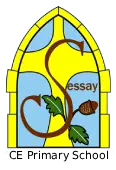Geography
Intent:
We have designed our Geography Curriculum to inspire pupils to become curious and explorative thinkers with a diverse knowledge of the world; in other words, to think like a geographer. We want pupils to develop the confidence to question and observe places, measure and record necessary data in various ways, and analyse and present their findings. We aim to build an awareness of how Geography shapes our lives at multiple scales and over time. We hope to encourage pupils to become resourceful, active citizens who will have the skills to contribute to and improve the world around them.
Our curriculum encourages:
- A strong focus on developing both geographical skills and knowledge.
- Critical thinking, with the ability to ask perceptive questions and explain and analyse evidence.
- The development of fieldwork skills across each year group.
- A deep interest and knowledge of pupils’ locality and how it differs from other areas of the world.
- A growing understanding of geographical concepts, terms and vocabulary.
Implementation:
Geography at Sessay is taught using a carefully planned curriculum, supported by the KAPOW Geography Scheme of work.
It is implemented through:
– half termly topics taught across a two-year rolling programme
– a spiral curriculum, with essential knowledge and skills revisited with increasing complexity, allowing pupils to revise and build on their previous learning.
– four strands, with a clear progression of skills and knowledge within them across each year group:
- Locational knowledge
- Place knowledge
- Human and physical geography
- Geographical skills and fieldwork
-Cross-curricular links are included throughout, allowing children to make connections and apply their Geography skills to other areas of learning. Our enquiry questions form the basis for our Key stage 1 and 2 units, meaning that pupils gain a solid understanding of geographical knowledge and skills by applying them to answer enquiry questions.
-Each unit contains elements of geographical skills and fieldwork to ensure that fieldwork skills are practised as often as possible. Our units follow an enquiry cycle that maps out the fieldwork process of question, observe, measure, record, and present, to reflect the key elements in the National curriculum.
-Fieldwork includes smaller opportunities on the school grounds to larger-scale visits to investigate physical and human features. Developing fieldwork skills within the school environment and revisiting them in multiple units enables pupils to consolidate their understanding of various methods.
Impact:
Sessay children leave school equipped with a range of skills and knowledge to enable them to study Geography with confidence at Key stage 3. We enable our children to be curious and inspired geographers with respect and appreciation for the world around them alongside an understanding of the interconnection between the human and the physical.







